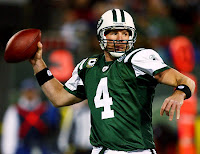Recently, I have had to deal with a few injuries related to throwing with my athletes that has also been concurrent with a rise of throwing injuries of a few professional athletes like Stephen Strasburg and Brett Favre.
Some of these injuries are not serious and the athlete can continue playing but others, like Strasburg, unfortunately, ended their seasons prematurely.
What do all of these have in common?
The short answer was that there was more than likely a breakdown somewhere in the kinetic chain that caused the body's tissues to be overexerted in a compensation that lead to the injury. That's the easy answer. The bigger question is WHERE in the kinetic chain was there a breakdown?
THROWING BASICS 101
 When we look at throwing in any sport, we see a VERY complex skill. It requires the full body to be completely coordinated to achieve a efficient and injury free motion. This means that the from the big toe up to the top of the head, everything must be in working order and orderly working.
When we look at throwing in any sport, we see a VERY complex skill. It requires the full body to be completely coordinated to achieve a efficient and injury free motion. This means that the from the big toe up to the top of the head, everything must be in working order and orderly working. Proper joint motion must occur at the right time, place and speed so that the muscles and connective tissue that are attached can ECCENTRICALLY LOAD so that they can create the CONCENTRIC UNLOAD/EXPLODE which results in the throw.
When there a glitch in the process somewhere, we get an overloaded compensation somwhere else in the body that leads to an injury. For Straburg and Favre, it's focusing in on their elbows. For other throwers, it can go into places like the shoulder and lower back. It just depends on the person.
The question is now HOW DO WE TRAIN AND CONDITION FOR THE SKILL OF THROWING FOR POWER AND ACCURACY AS WELL AS FOR INJURY PREVENTION?
The process lies within Applied Functional Athletic Development design. In my other post 5 WAYS TO PREPARE YOUR ATHLETE FOR SUCCESS, I outlined the process focusing on the foot and ankle, but the same process applies for skill of throwing to develop an proficient injury free motion. It is:
1) Functional Prep
2) Fundamental Movement
3) Complex Movement
4) Skill (Throwing, in this case)
A lot of times, people tend to skip the one step or another and when that happens, we can get SOME results but not as comprehensive as is possible using the 4 step process.
In the next blog post, we will go over the Fundamental Preparation that everyone who is starting to throw, throwing or maybe post rehab should do. We'll also do some investigations into some of the elbow injuries that throwers suffer from. There are already posts on Rotator Cuff impingement and Shoulder Instability.
Please send any questions or comments to Will@3doptimalperformance.com.
Thanks,
Will


No comments:
Post a Comment